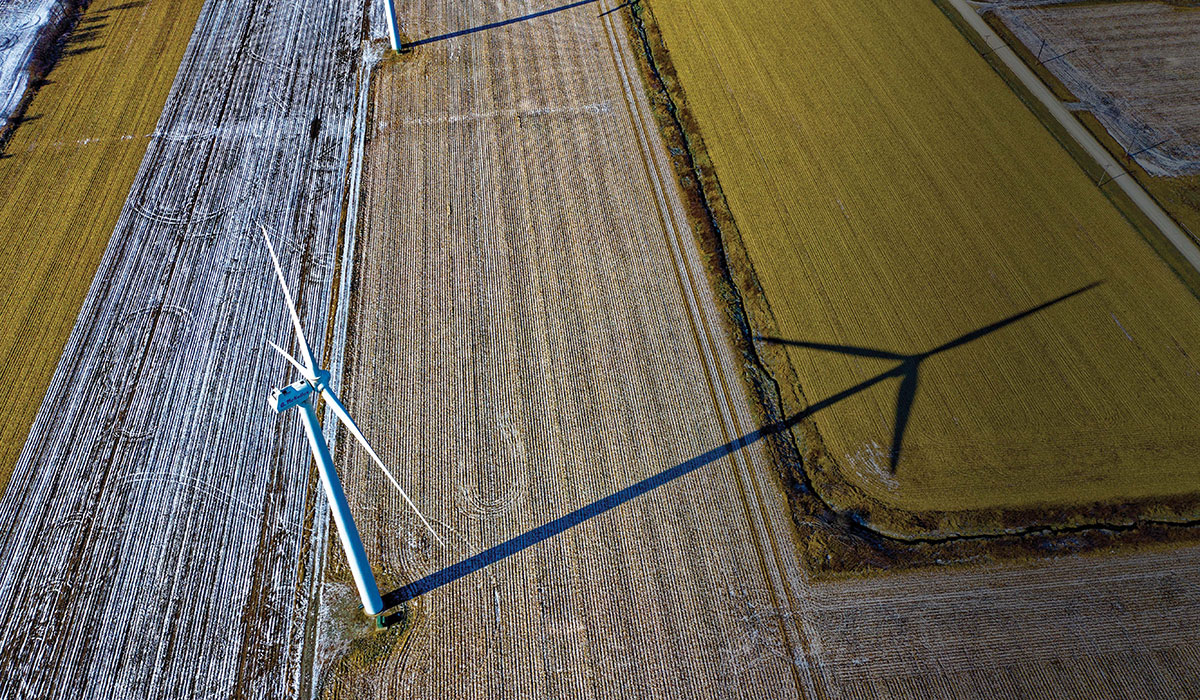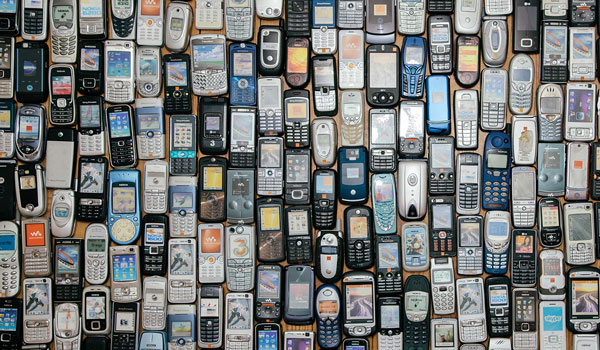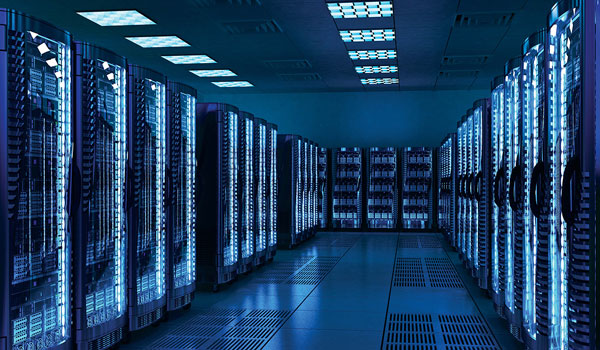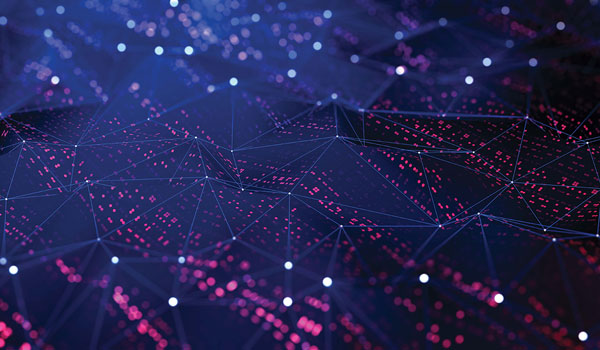
The earth is our home. We try to do our small part to protect it. Recycle. Turn off the lights when exiting a room. Use less water. In our digital lives: go paperless on bills and bank statements. Post on social media to raise awareness about global warming. Upgrade mom’s phone to store more photos instead of printing them. With evolving technology, now we can even pay for a cup of coffee in bitcoin rather than printed money. These all seem like actions that would help the environment, or, at the very least, not harm it. But turning paper into data, using energy to post on social media, or mining for cryptocurrency are surprisingly costly endeavors for our planet.
Gettysburg faculty, alumni, and students are asking the less obvious questions about how our actions impact the environment, collaborating to uncover new knowledge about the role technology plays, and offering leadership on how to lessen our digital footprints.
When a new version of the hottest smartphone hits the market, people clamor to upgrade. The average smartphone is used for less than two years before it gets replaced. Each year, the world disposes of a million tons of phone chargers alone. Where are those devices and chargers going after they’re traded in for the latest models?
According to United Nations data, about 70 percent of the world’s electronic waste or “e-waste”—discarded electrical or electronic devices—ends up in China. A large proportion of that e-waste shows up specifically in Guiyu, China, on the coast of the South China Sea, according to research by Max Butcher ’19, Matthew Robertson ’19, and Marion McKenzie ’19.
At Gettysburg College, student and faculty collaboration is a major component of a transformative liberal arts education—one that develops actively engaged and informed global citizens who go on to use their knowledge to improve the world.
During their sophomore year, Butcher, Robertson, and McKenzie completed a project called “The afterlife of an iPhone: Where our e-waste is going and how it affects human health and the economy” for Environmental Studies Prof. Salma Monani’s Introduction to Environmental Humanities class.
They found that most of the valuable metals found in electronic waste are extracted and reused. But the remaining heavy metals and other toxins can have negative effects on both human health and ecosystems.
“Humans weren’t meant to be exposed to metals and neurotoxins in this concentrated way,” said Butcher. “Guiyu is experiencing lead poisoning that can lead to stunted brain development, especially in developing children. Chemicals leach into rivers and make the water undrinkable. These practices have an enormous impact on the local ecosystem and the people living there.”

Suddenly, the cost of a new phone takes on a different meaning. “How we use technology matters, and how conscious we are of that usage matters,” added Monani. “The more we know, hopefully, the more conscious we become about how we use it, and that will have ripple effects for our environment.”
Guiyu has tried to mitigate the environmental effects of e-waste by shutting down thousands of polluting recyclers and moving others into a regulated industrial park outside of the town. Improvements have been noted by Guangdong’s Environmental Protection Department, but Butcher said all of us need to be more cognizant of our digital footprints.
“In the United States, it’s easy to be disconnected from the negative effects of our digital lives because we export our e-waste to places such as China. It can be important to update technology, but we need to balance upgrades with the understanding of the impact they have,” said Butcher, who hopes to work on new energy vehicles after graduation. “If your phone works fine, maybe wait a couple of years before you upgrade.”
As Butcher noted, many of us are unaware of the negative impact of our digital existence, from upgrading and disposing of our cell phones to— as Heather Ipsen ’15 explained—simply using them.
“It can be hard to believe that adding 1,000 photos from your latest vacation to Facebook or posting funny videos of your cat will have any impact on the environment,” said Ipsen. “However, the more we post, the more storage space big data and social media companies need.”
Ipsen, who recently completed her master’s thesis at Syracuse University on the social and environmental impact of our use of data centers, is pushing people to think long and hard about the impact of their social media use.
Her research focuses on the use of cloud computing to store, manage, and process data through a network of remote servers hosted on the Internet, rather than on local servers or personal computers. Because this data does not seemingly take a physical form, it’s easy to feel its impact on the environment is also invisible. But this is a false assumption.
“The cloud is not an indiscernible, amorphous place out there, somewhere,” Ipsen said. Data centers, or server farms, are enormous warehouses stocked with large numbers of networked computers that house the cloud. They require massive amounts of energy to run and cool. As demand for data increases, so does the space and power needed to feed that demand, which translates into a lot of water and electricity usage. According to the Natural Resources Defense Council, American server farms use enough energy “to power all the households in New York City—twice over.”
 This mammoth amount of energy use inspired Ipsen to dig deeper into how Facebook, in particular, is approaching the cloud and the development of data centers. Through her master’s thesis work, she found that Facebook data centers are expanding at an “alarming pace.” The company has built five new data centers since 2017, for a total of 12 “cloud campuses” worldwide. Every campus houses between two and five data centers, she explained, each of which stretch several football fields in size. Additionally, virtual reality and other highdefinition features are becoming increasingly more common and expected by consumers. All of this demand necessitates more energy.
This mammoth amount of energy use inspired Ipsen to dig deeper into how Facebook, in particular, is approaching the cloud and the development of data centers. Through her master’s thesis work, she found that Facebook data centers are expanding at an “alarming pace.” The company has built five new data centers since 2017, for a total of 12 “cloud campuses” worldwide. Every campus houses between two and five data centers, she explained, each of which stretch several football fields in size. Additionally, virtual reality and other highdefinition features are becoming increasingly more common and expected by consumers. All of this demand necessitates more energy.
“Not only is there an increasingly large number of people using the cloud, but data companies are also demanding an increasing amount of storage space due to advancing technology,” said Ipsen. “So, the more we post to Facebook, the more servers Facebook will bring in, which subsequently will increase demand for energy and the resources to power data centers.”
When it comes to limiting the environmental impacts of data centers, Ipsen said the best thing to do is store less information on the cloud. “Little actions, like not posting your 1,000 photos, tend to add up quickly —especially with how ubiquitous social media has become. Alternatively, even simply deleting old files, photos, and videos will help lower the demand for space on cloud servers,” she said.
Ipsen became interested in environmental science and sustainability while a student at Gettysburg, commenting that “it was a combination of classes, experiences, and people at Gettysburg that fostered my passion.”
She initially wanted to become a doctor, until an introductory environmental studies course with Environmental Studies Prof. Randy Wilson changed her mind. At Gettysburg, she worked as a recycling and sustainability intern for the College’s Facilities Services Department, helped with numerous sustainability initiatives on campus, and sat on the town’s recycling committee. She also worked on an independent honors thesis with Environmental Studies Prof. Sarah Principato, who encouraged her, alongside Monani, to pursue her graduate degree in geography.
“My background as a student and employee at Gettysburg played a big role in the direction of my master’s thesis project and my future in environmental sciences,” said Ipsen.
In the near future, Ipsen plans to become a sustainability coordinator or manager at a university or college because she “believes that higher education is the best field in which one can foster concern for the environment.”
“If I can manage to convince students—who will be running the country in a matter of years—to care, as well as their professors—who can publish credible supporting research—to care, then I can hopefully help prevent the worsening of climate change,” she said.
Just as Ipsen’s experiences as a student impacted her work as an alum, the ongoing collaborative research between current students and faculty at Gettysburg College continues to make an impact—not only on the career trajectories of students, but also on the direction of environmental and related research areas of importance.
For example, a shared interest in Bitcoin between Tyler Mann ’20 and Economics Prof. Rimvydas Baltaduonis (read more about Prof. Baltaduonis on page 32) led to trailblazing research that advances discussions on the nuances of the positive and negative environmental impacts of bitcoin mining.
Bitcoin, first launched in 2009, is the largest and the most well-known of the cryptocurrencies—digital currencies that exist within a decentralized exchange system. So, in other words, no banks. No middlemen. No frozen accounts. Getting one’s hands on bitcoin can be lucrative. At its peak, in December 2017, one bitcoin was worth $19,783. At the time of this writing, a bitcoin is worth $3,274. No wonder it’s often called “digital gold.”
However, bitcoin isn’t free money—far from it. Mining, the process used to acquire bitcoin, can be costly for the pocketbook and potentially devastating for the environment because it requires massive amounts of energy. In its simplest explanation, bitcoin is a linked list that condenses and secures data using cryptographic hashing.
“Computers go through many thousands of combinations of hashes, which are large amounts of bitcoin transaction data transformed into smaller, fixed lengths that can be built upon in a blockchain,” Baltaduonis explained. “When the algorithm says you’ve got the right hash and unlocks the blockchain, the miner is rewarded with bitcoin.” The process, in other words, is a bit like trying to open a metaphorical lock and key with bruteforce computation.
Industrial-level bitcoin mining translates into many computers working overtime to crack mathematical equations that validate bitcoin transactions based on blockchain technology.
The process requires large sums of electricity to power and cool computers so they don’t overheat. It’s been estimated that bitcoin mining produces the carbon dioxide equivalent of 1 million transatlantic flights in a single year.
In 2018, Mann happened to be taking Chinese 102 with Baltaduonis, who was auditing the course as a professor. After class, Baltaduonis shared an article outlining alarming statistics related to bitcoin mining. Mann was struck by the statistic that the bitcoin network is estimated to consume “more electricity than nations such as Peru and Ireland.”
Because Mann, a mathematical economics major, had spent a semester abroad in Shanghai and interned at ViewFin, a leading blockchain solution provider, Baltaduonis asked for his thoughts. That exchange ultimately led to a fruitful research partnership aimed at illuminating how the growth of industrial bitcoin mining and other cryptocurrencies has impacted energy production in China—and, in turn, the environment.
It's been estimated that bitcoin mining produces the carbon dioxide equivalent of 1 million transatlantic flights in a single year.”

Through support from the Kolbe Summer Fellows Program, made possible through a fund established by Eric Kolbe ’65, Baltaduonis and Mann spent a month together in Beijing conducting research. “We wanted to understand what had led to China’s dominance in this bizarre new industry and its impact,” said Mann.
What led to China’s dominance? Largely, cheap energy. China is a major player in the bitcoin market, leading the world in the development of hash algorithms. “Currently, about 70 percent of the hashing share in the world belongs to China,” said Baltaduonis.
When it comes to making a profit from bitcoin hashing, there are two variables that miners can control to yield a profit: the price of electricity and the price of cooling. Credit Suisse estimates that 80 percent of the expenses for bitcoin miners are spent on electricity. China has abundant amounts of inexpensive energy ranging from dirty coal to renewables such as hydro, solar, and wind. The government has been historically lenient on environmental protection policies. With cheaper energy sources, China is in a stronger position to make greater profit margins.
 Although China still burns fossil fuels to power bitcoin mining (the country is responsible for half of the world’s coal consumption) through their research, Baltaduonis and Mann came to the conclusion that bitcoin mining is likely to do more good for the environment than harm.
Although China still burns fossil fuels to power bitcoin mining (the country is responsible for half of the world’s coal consumption) through their research, Baltaduonis and Mann came to the conclusion that bitcoin mining is likely to do more good for the environment than harm.
“China has a lot of hydro and wind power potential, and they’re developing the systems to get that renewable power from one part of the country to the other,” said Baltaduonis. “If China can continue developing low-cost, green energy, it could power a lot of the cryptocurrency demand. In some ways, cryptocurrencies or blockchain technology might be an additional incentive for China to develop renewable energy.”
He added, “I also think the technology will advance and use less energy to achieve the same outcomes.”
Mann agreed. “Our research found that environmental harm claims are overstated since the leading province in China is hydro-dominant and much of the mining happening is the consumption of otherwise wasted hydroelectric power. As a result, mining could be a net positive if policymakers and plant operators coordinate to use mining as a way to offset installment costs,” Mann said.
The rich research opportunities available at Gettysburg College made Mann’s work possible. “Not many small liberal arts schools offer students the opportunity to carry out faculty-mentored, individualized undergraduate research projects,” he said. “And even less are able to help fund a project that includes a month in China’s capital to help shed light on a real-world problem.”
An overarching message from Gettysburg faculty, alumni, and students who care about the environment is this: we have to be more aware of the invisible effects of our digital practices. When more people understand that deleting old photo files or waiting to upgrade a cell phone can have a real impact on the world, they will be more apt to take those actions. Knowledge is power, and Gettysburgians are building more of it every day.
“Something I love about Gettysburg students is that they want to be responsible citizens of the world,” said Monani. “That makes me hopeful.”
Across the board, faculty, alumni, and students shared the hope that our future holds more responsible digital usage and the belief that Gettysburg College is developing critical thinkers who will help lead the charge.
By Katelyn Silva
Posted: 06/05/19